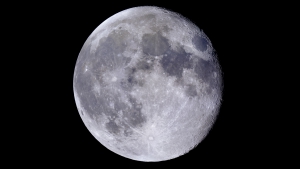
Stargazing Nights
- Where:
- Frosty Drew Observatory
- When:
- Friday November 18, 2016 at 6:00 p.m.
- Cost:
- $1 Suggested Donation per Person
Tonight is Stargazing Night at Frosty Drew Observatory and skies are looking awesome! We can expect mostly clear to clear skies all night long. The 78% waning gibbous Moon will rise just before 9:00 p.m. offering us super dark skies in the evening followed by fabulous views of the rising gibbous Moon. Temps will drop into the 40’s tonight, making for cold conditions. Dressing properly will make the difference between a cold night outside or a fabulous night under the stars. Regardless, it is certainly the night to be out.
We will open the Observatory and Sky Theatre at 6:00 p.m. In the Observatory, telescopes will feature a fabulous view of Venus’ near third quarter phase, followed by twilight views of Uranus and binary stars. Once dark skies set in we will showcase a handful of fabulous star clusters and the fabled Orion Nebula. Once the Moon rises, the cratered lunar surface will rock our view. In the Sky Theatre, temps will be toasty warm and onscreen we will present our showcase of celestial objects photographed at Frosty Drew Observatory. We’ll stay open until 11:30 p.m. at the earliest. Following us on Twitter (@FrostyDrewOBSY) or Facebook will get you updates from the Observatory on conditions and will keep you informed on when we decide to pack up for the night.
Overall, tonight looks to be a fantastic night out at the Observatory. Clear, dark skies will rock our geek early in the night, followed by fabulous views of the gibbous Moon. We also have a number of meteor showers happening right now, including the Leonids, Alpha Monocerotids, N. Taurids, Andromedids, and November Orionids; all of which will significantly increase our chances of seeing shooting stars tonight. Temps will be cool, it is late autumn, so a parka, sweater, gloves, hat, and boots will be a necessity. Now gear up and set out to Frosty Drew tonight and make the best of clear nights out under the stars!
-------------------------------------------------------------------------
Weekly Happenings
Scott MacNeill
On November 4th, the NASA Dawn spacecraft, which has been orbiting dwarf planet Ceres since March 2015, initiated an orbital maneuver that will send Dawn to its sixth science orbit. The end of the previous science orbit had Dawn at an altitude of 920 miles. The new science orbit will bring Dawn to an altitude of 4,500 miles over Ceres surface. This new science orbit will take about a month to acquire, with an approximate acquisition date in early December. The sixth science orbit will focus on refining previously collected data sets and measurements by taking into account radiation and cosmic rays unrelated to Ceres. As with the previous science orbits, fabulous images of the dwarf planet will keep pouring in. At this point we have collected so many images of Ceres that we can easily get a realistic idea of what this beautiful dwarf planet looks like. The Dawn mission is certainly one of the most amazing missions of the decade, with a history of visiting two celestial objects in the Asteroid Belt (Vesta and Ceres). Check out the fabulous views that Dawn has had over its remarkable journey and gear up for yet another science orbit around the closest dwarf planet, Ceres.
With Thanksgiving less than a week away, the 2016 Holiday Season is bearing down on us in full out fluffy-kitten mode. For some, this brings warm thoughts of evergreen massacres, confrontational shopping experiences, and contentious discussions with extended family; while others see it as a cold departure from the warmer side of the year with long cold of winter nights ahead. Well we can curl up with the heater and cry about closed beaches, early sunsets, and frozen fingers; or we can bundle up and embrace the amazing celestial viewing the darker season presents. And what better way to do that than with the constellation Orion, which blazes brightly in the wintertime sky. Currently rising just after sunset, the constellation Orion is one of the most recognized constellations in the sky and is loaded with stunning objects to observe. Though non as awesome as the vast Orion Nebula. Appearing to the naked eye as the middle star in Orion’s sword, the Orion Nebula is the closest star forming nebula to the Solar System at near 1,600 light years distant. The nebula is home to hundreds of newborn stars and spans 25 light years in diameter. This nebula will be the most viewed object of the winter time sky at Frosty Drew Observatory and there is little excuse to miss out on the views. So wipe away those summertime tears and ring in the holidays with a fabulous night out under the beautiful winter time starscape.
All of us geeks at Frosty Drew Observatory wish you a safe and happy Thanksgiving!
Save the Date!
Stars, Stories, and S’mores – Saturday, November 26, 2016 at 6:00 p.m.
Join Frosty Drew astronomers for a fabulous holiday weekend evening at the South Kingstown Land Trust Barn with a bonfire, tasty eats, stories around the fire, and stargazing. What a fabulous way to spend a post Thanksgiving night out with your family and friends. The fun starts at 6:00 p.m.
Check out the SKLT website for information and directions.
-Scott


